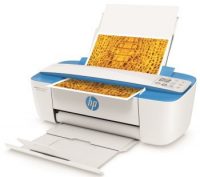 With today’s technological advancements, why do printers still cause such frustration?
With today’s technological advancements, why do printers still cause such frustration?
The New Statesman discussed the modern day printer and the common problems with printing,, noting that HP have “recently prevented third-party cartridges from working in their printers”, and that this is just one in a long line of problems.
Comparing the initiation of children in a Brazilian tribe, where they wear gloves woven with biting ants for 10 minutes, with that of British families weeping “at the foot of a printer” and continually repeating “but there is no paper jam”, the article states that there are “none alive that have escaped this fate”.
With the news that some HP Inc’s printers are blocking remanufactured cartridges, and with originals more expensive, the article states that printers are only going to get worse.Technology for printing has not stagnated since the “first personal printers were unleashed in 1981”, but in a world where 3D printers can print parts for an aeroplane, the article questions why is it so difficult to print what is needed on a home printer “in less than two hours?”
The author, Amelia Tait, goes on to say “that this is more about business that it is about technology” and that companies sell inkjet printers at a loss but will make their money “by selling ink cartridges”, adding that this is known as a “razor-and-blades business model”. Tait noted that this is why “ink is so expensive” and “why it runs out so quickly”, and that the “cyan cartridge has to be full” to print “in black and white”.
Companies like HP Inc, she notes, use chips in their cartridges “to tell whether a refill is one of their own” and have been utilised before to “region-block cartridges so they can’t be sold on in other countries” – the chips also tell “the printer” when the cartridge is empty “except in 2008, PC World found some printers claim the cartridges are empty” when they are not.
Tait noted that because companies sell printers cheaply “quality inevitably suffers”, and that is why there are so many printing problems like “paper jams”, paper-loading difficulties and the message “would you like to cancel this print job”, as well as the printer having a mind of its own and printing numerous copies. Office printers are “protected” by OEM-specific designs and patents, so it is difficult to “fix the device yourself” and therefore companies make more “money by sending out their own personal technicians”.
Summing up, Tait noted that “there is an easy fix. Buy a laser printer instead” – as even though the initial cost of the printer and “the replacement toner cartridges are more expensive, in the long run you’ll most likely save money”.
